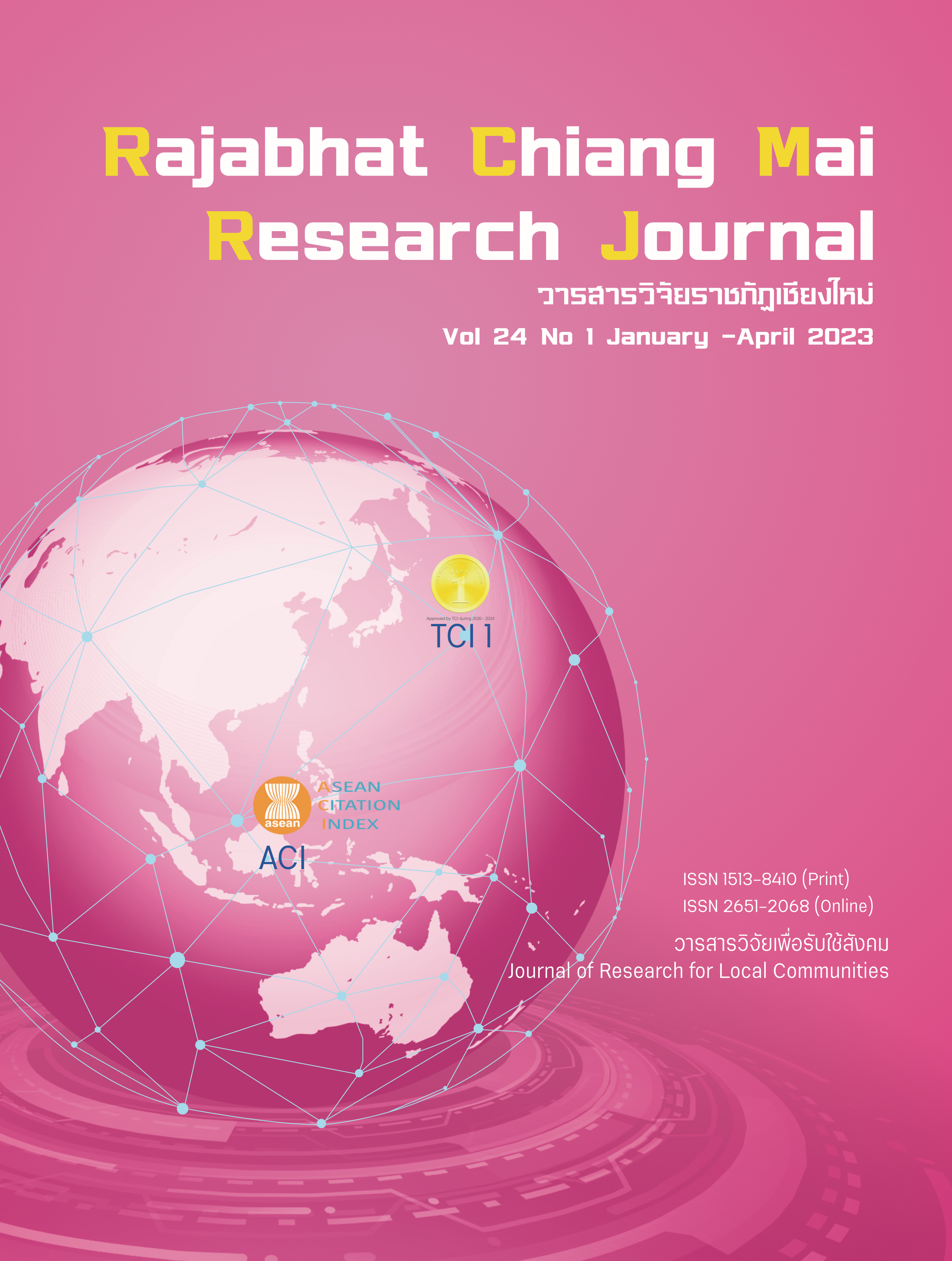Highland Management in Rotation and Mono Cropping Systems of Li Sub-watershed, Lamphun Province
DOI:
https://doi.org/10.57260/rcmrj.2023.260059Keywords:
Highland management, Rotation cropping, Mono croppingAbstract
The objectives of this research are: 1) To compare the factors of land tenure, ecological aspects, economic conditions, perception of information and wisdom affecting the selection in highland rotation cropping and mono cropping. 2) To analyze and identify differences in land management between highland rotation cropping and mono cropping. And 3) to analyze and assess the link between the intensive highland rotation cropping and mono cropping with soil management and degradation. There were quantitative and qualitative data collections from farmer groups of both systems by using the tools as questionnaires and in-depth interviews with participant observation including exploring the research area plot. The data were analyzed using descriptive statistical method in the form of frequency distribution, percentage and comparison table. The results showed the land tenure of the two highland cropping systems was not different. There were no documents and rights over the lands. Rotation cropping system focused on intensive commercial agricultural production, whereas mono cropping system focused on subsistence. Both systems used traditional wisdom. The characteristics of rotation cropping were separated rotation cropping with legumes and no legumes, so crops could be grown throughout the year and continuously. Therefore, the soil management was intensive and the soil was not time for resting. The characteristics of mono cropping system involved growing only one type of crop every other year and year after year. There was a one-year soil resting and the mono crops were replanted annually, so there was not the soil resting. There are differences in the use of chemical fertilizers and concentrated chemicals, as well as soil fertility. It could be concluded that both of cropping systems were not different and had moderate fertility The soil erosion in rotation cropping system was very low to moderate level, thus soil condition was sustainable. The soil erosion in mono cropping system was low to very severe level, thus soil condition was not sustainable.The policy and action recommendations, the government should support in terms of alternative agricultural policies and budgets for developing highland areas seriously and comprehensively in accordance with the sufficiency economy.
Downloads
References
Boonchai, K. (2016). Rotational Farming: Cultural Rights for Ecological and Social Practice. Journal of Social Development, 18, 137–156. Retrieved from https://so04.tci-thaijo.org/index.php/jsd/article/view/62640 (In Thai)
Boonchee, S., Inthaphan, P., & Utpoung, N. (1997). Management of Sloping Lands of Sustainable Agriculture in Thailand Progress Report 1989 - 1996. Technical Section Office of and Development Region 6. Bangkok: Department of Land Development, Ministry of Agriculture and Cooperatives. (In Thai)
Hengprayoon, C.. (2004). Fundamentals of Soil Science for Sustainable Agriculture. Nakhon Pathom: Department of Soil Science Faculty of Agriculture Kamphaeng Saen Kasetsart University Kamphaeng Saen Campus. (In Thai)
Hirsch, P. (1990). Development Dilemmas in Rural Thailand. England: Oxford University Press.
Huizing, H., & Bronsveld, K. (1992). The Use of Geo-Information Systems and Remote Sensing for Evaluating the Sustainability of land use Systems. Proc. International workshop on Evaluation of Sustainable land Management in the Developing World, Chiang Rai Thailand. Retrived from IBSREM, Bangkok, Thailand. (In Thai)
Kampolkon, T. (2004). Shifting Farming in the Life Cycle of the Paganyaw Tribe: Relationship of Balancing and Sharing Between Man and Man, Man and Nature, Man and Supernatural Beings. Chiang Mai: B.S.D. Printing Co., Ltd.
Pasabud, P., Lattirasuvan, T., Yothapakdee, T., & Khonkaen, P. (2022). Critical success factors for sustainable integrated agriculture in Sajook and Sakiang villages in Khun Nan Subdistrict, Chalerm Prakiat District, Nan Province. Humanities and Social Sciences Journal, Ubon Ratchathani Rajabhat University, 13(1), 267–275. https://so01.tci-thaijo.org/index.php/humanjubru/article/view/250538 (In Thai)
Shiner,W.W., Philipp, P.F., & Schmehl, W.R. (1982). Farming Systems Research and Development. Guideline For Developing Countries. Boulder: Westview.
Suksawat, M. (2000). Soil Fertility. Bangkok: Pimluck. (In Thai)
Wongmaneerot, A. (2004) Fundamentals of -Soil Science for Sustainable agriculture. Nakhon Pathom: Department of Soil Science, Faculty of Agriculture, Kamphaeng Saen, Kasetsart University, Kamphaeng Saen Campus. (In Thai)
Downloads
Published
How to Cite
Issue
Section
License
Copyright (c) 2023 Rajabhat Chiang Mai Research Journal

This work is licensed under a Creative Commons Attribution-NonCommercial-NoDerivatives 4.0 International License.
1. Articles, information, content, images, etc published in the “Community and Social Development Journal” are copyrighted by the Community and Social Development Journal, Chiang Mai Rajabhat University. In order to properly distribute the articles through print and electronic media, the authors still hold the copyright for the published articles under the Creative Commons Attribution (CC BY) license, which allows the re-distribution of the articles in other sources. References must be made to the articles in the journal. The authors are responsible for requesting permission to reproduce copyrighted content from other sources.
2. The content of the articles appearing in the journal is the direct responsibility of the article authors. The editorial board of the journal does not necessarily agree with or share any responsibility.














